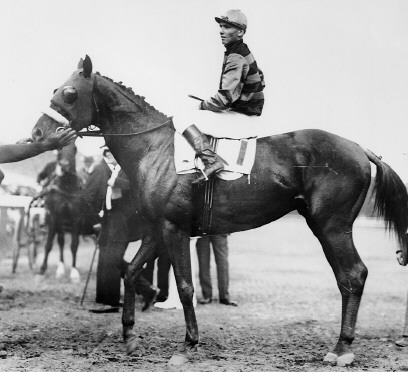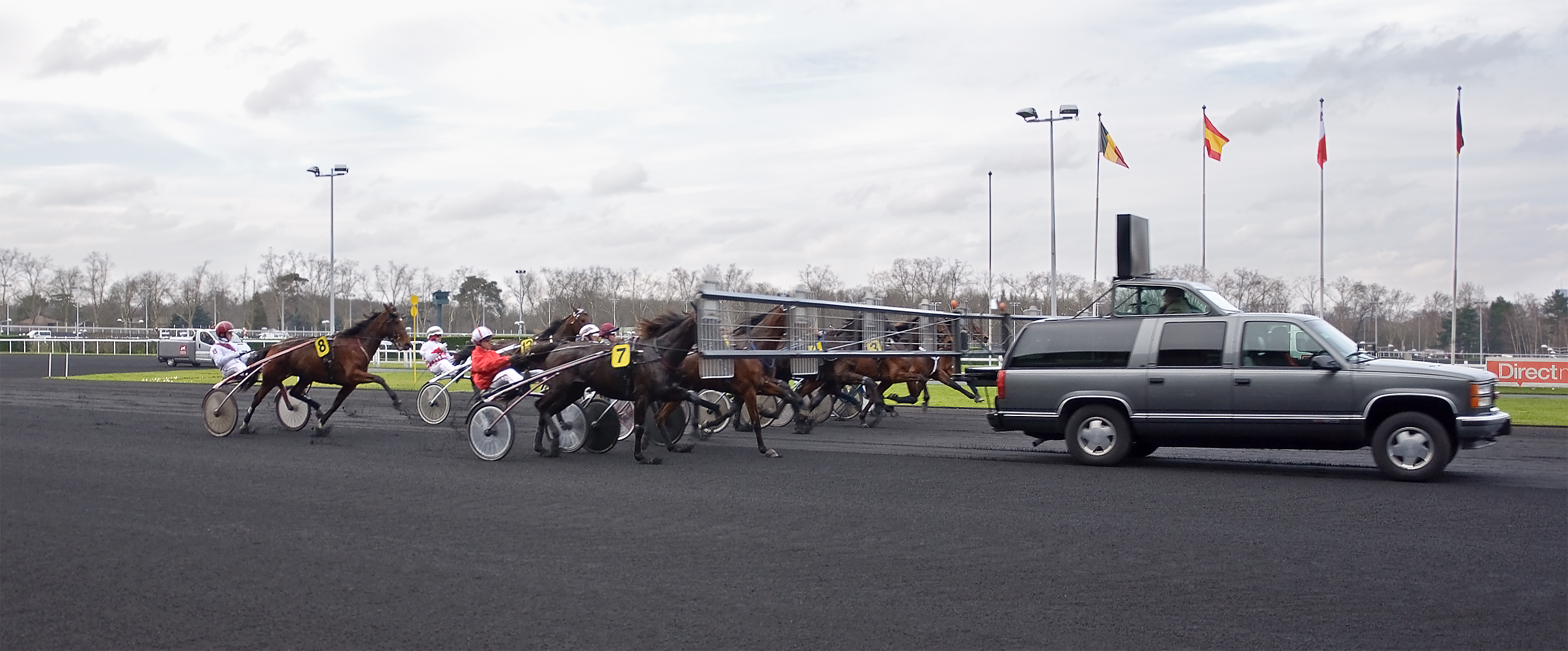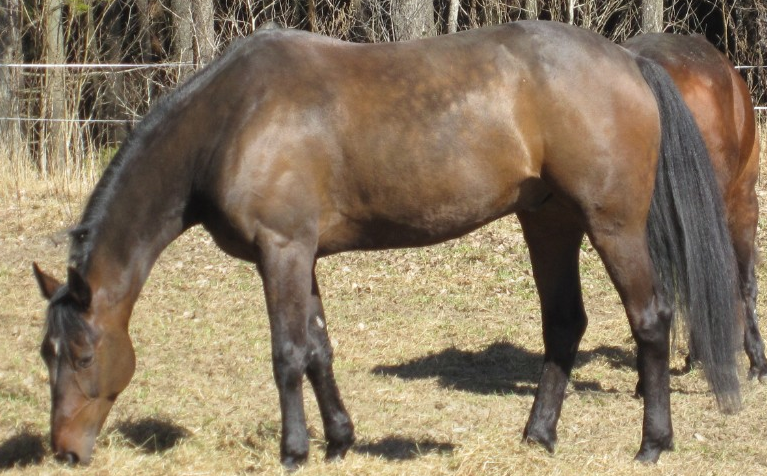|
Woodburn Stud
Woodburn Stud was an American horse breeding farm located in Woodford County, Kentucky about from the city of Lexington. It was established in the 18th century as an original land grant property of General Hugh Mercer to whom it had been granted for his military services during the American Revolutionary War. Robert Alexander (1767–1841), a Scottish immigrant, came to Virginia from Scotland in 1786. Around 1790 he purchased the Mercer estate in Kentucky. Under the guidance of his son, Robert A. Alexander, during the 19th century, Woodburn Stud became the birthplace of Kentucky's Thoroughbred industry. History Robert A. Alexander was the first to establish a systematic design method for horse breeding. Woodburn Stud was home to the stallion Lexington (1850–1875), America's leading sire for sixteen years. Lexington sired numerous champions and winners of major races including Duke of Magenta, Kentucky and Preakness, for whom the Preakness Stakes is named. Woodburn breed ... [...More Info...] [...Related Items...] OR: [Wikipedia] [Google] [Baidu] |
Triple Crown Of Thoroughbred Racing
The Triple Crown of Thoroughbred Racing, often shortened to Triple Crown, is a series of horse racing, horse races for Thoroughbreds, often restricted to three-year-olds. Winning all three of these Thoroughbred racing, Thoroughbred horse races is considered the greatest accomplishment in Thoroughbred racing. The term originated in mid-19th-century England and nations where Thoroughbred racing is popular each have their own Triple Crown series. England In Horse racing in Great Britain, England, where the term Triple Crown originated with West Australian (horse), West Australian's three wins in 1853, it is made up of: # The 2000 Guineas Stakes, 2,000 Guineas Stakes, run over 1 mile (1,609 metres) at Newmarket Racecourse in Newmarket, England, Newmarket, Suffolk # Epsom Derby, The Derby, run over 1 mile 4 furlongs and 10 yards (2,423 metres) at Epsom Downs Racecourse in Epsom, Surrey # The St Leger Stakes, run over 1 mile 6 furlongs and 132 yards (2,937 metres) at Doncaster Raceco ... [...More Info...] [...Related Items...] OR: [Wikipedia] [Google] [Baidu] |
Baden-Baden (horse)
Baden-Baden (1874 – date of death unknown) was an American Thoroughbred racehorse best known for winning the 1877 Kentucky Derby. He was bred by A. J. Alexander at his Woodburn Stud in Woodford County, Kentucky. Baden-Baden was sired by Australian (GB) (who in turn was sired by West Australian, first horse to win the English Triple Crown in 1853); his dam, Lavender, was sired by Wagner.ASB - Baden Baden Retrieved on 2009-6-19 He was purchased at Woodburn's yearling sale by Kentucky horseman Daniel Swigert, from . Racing career After the sale, Baden-Baden was trained by future[...More Info...] [...Related Items...] OR: [Wikipedia] [Google] [Baidu] |
Kentucky Derby
The Kentucky Derby () is an American Graded stakes race, Grade I stakes Thoroughbred racing, race run at Churchill Downs in Louisville, Kentucky. The race is run by three-year-old Thoroughbreds at a distance of . Colt (horse), Colts and geldings carry and fillies . Held annually on the first Saturday in May, the Derby is the first leg of the Triple Crown of Thoroughbred Racing (United States), Triple Crown. It is preceded by the two-week-long Kentucky Derby Festival. The race is known as "The Run for the Roses", as the winning horse is draped in a blanket of roses. Lasting approximately two minutes, the Derby has been alternately called "The Most Exciting Two Minutes in Sports", "The Fastest Two Minutes in Sports", or "The Greatest Two Minutes in Sports", coined by Churchill Downs president Matt Winn. At least two of these descriptions are thought to be derived from the words of sportswriter Grantland Rice, when in 1935 he said "Those two minutes and a second or so of derby ru ... [...More Info...] [...Related Items...] OR: [Wikipedia] [Google] [Baidu] |
American Classic Races
In the United States, the Triple Crown of Thoroughbred Racing, commonly known as the Triple Crown, is a series of horse races for three-year-old Thoroughbreds, consisting of the Kentucky Derby, Preakness Stakes, and Belmont Stakes. The three races were inaugurated in different years, the last being the Kentucky Derby in 1875. The Triple Crown Trophy, commissioned in 1950 but awarded to all previous winners as well as those after 1950, is awarded to a horse who wins all three races and is thereafter designated as a Triple Crown winner. The races are traditionally run in May and early June of each year, although global events have resulted in schedule adjustments, such as in 1945 and 2020. The first winner of all three Triple Crown races was Sir Barton in 1919. Some journalists began using the term ''Triple Crown'' to refer to the three races as early as 1923, but it was not until Gallant Fox won the three events in 1930 that Charles Hatton of the ''Daily Racing Form'' put the ... [...More Info...] [...Related Items...] OR: [Wikipedia] [Google] [Baidu] |
Milton H
Milton may refer to: Names * Milton (surname), a surname (and list of people with that surname) ** John Milton (1608–1674), English poet * Milton (given name) Places Australia * Milton, New South Wales * Milton, Queensland, a suburb of Brisbane ** Milton Courts, a tennis centre ** Milton House, Milton, a heritage-listed house ** Milton railway station, Brisbane ** Milton Reach, a reach of the Brisbane River ** Milton Road, an arterial road in Brisbane Canada * Milton, Newfoundland and Labrador * Milton, Nova Scotia in the Region of Queens Municipality * Milton, Ontario ** Milton line, a commuter train line ** Milton GO Station * Milton (federal electoral district), Ontario ** Milton (provincial electoral district), Ontario * Beaverton, Ontario a community in Durham Region and renamed as Beaverton in 1835 * Rural Municipality of Milton No. 292, Saskatchewan New Zealand * Milton, New Zealand United Kingdom England * Milton, Cambridgeshire, a vill ... [...More Info...] [...Related Items...] OR: [Wikipedia] [Google] [Baidu] |
Cattle
Cattle (''Bos taurus'') are large, domesticated, bovid ungulates widely kept as livestock. They are prominent modern members of the subfamily Bovinae and the most widespread species of the genus '' Bos''. Mature female cattle are called cows and mature male cattle are bulls. Young female cattle are called heifers, young male cattle are oxen or bullocks, and castrated male cattle are known as steers. Cattle are commonly raised for meat, for dairy products, and for leather. As draft animals, they pull carts and farm implements. Cattle are considered sacred animals within Hinduism, and it is illegal to kill them in some Indian states. Small breeds such as the miniature Zebu are kept as pets. Taurine cattle are widely distributed across Europe and temperate areas of Asia, the Americas, and Australia. Zebus are found mainly in India and tropical areas of Asia, America, and Australia. Sanga cattle are found primarily in sub-Saharan Africa. These types, sometime ... [...More Info...] [...Related Items...] OR: [Wikipedia] [Google] [Baidu] |
Harness Racing
Harness racing is a form of horse racing in which the horses race at a specific gait (a trot or a pace). They usually pull a two-wheeled cart called a sulky, spider, or chariot occupied by a driver. In Europe, and less frequently in Australia and New Zealand, races with jockeys riding directly on saddled trotters ( in French) are also conducted. Breeds In North America, harness races are restricted to Standardbred horses, although European racehorses may also be French Trotters or Russian Trotters, or have mixed ancestry with lineages from multiple breeds. Orlov Trotters race separately in Russia. The light cold-blooded Coldblood trotters and Finnhorses race separately in Finland, Norway and Sweden. Standardbreds are so named because in the early years of the Standardbred stud book, only horses who could trot or pace a mile in a ''standard'' time (or whose progeny could do so) of no more than 2 minutes, 30 seconds were admitted to the book. The horses have proportiona ... [...More Info...] [...Related Items...] OR: [Wikipedia] [Google] [Baidu] |
Standardbred Horse
The Standardbred is an American horse breed best known for its ability in harness racing where they compete at either a trot or pace. Developed in North America, the Standardbred is recognized worldwide, and the breed can trace its bloodlines to 18th-century England. They are solid, well-built horses with good dispositions. Characteristics Standardbreds are generally well-muscled and similar to, but a bit heavier than, a Thoroughbred, with a large head often with a Roman nose profile, straight neck, sloping shoulder, defined withers, a deep girth, strong bone (legs) and hard feet. Standardbreds average and typically weigh between . They are most often bay, and less frequently brown, black, chestnut, gray or roan. Standardbreds are considered easy-to-train horses with a willing submissive nature. Gaits Standardbreds race either at a trot or pace. In the trot, the horse's legs move in diagonal pairs; when the right foreleg moves forward, so does the left hind leg, ... [...More Info...] [...Related Items...] OR: [Wikipedia] [Google] [Baidu] |
Flat Racing
Horse racing is an equestrianism, equestrian performance activity, typically involving two or more horses ridden by jockeys (or sometimes driven without riders) over a set distance for competition. It is one of the most ancient of all sports, as its basic premise – to identify which of two or more horses is the fastest over a set course or distance – has been mostly unchanged since at least classical antiquity. Horse races vary widely in format, and many countries have developed their own particular traditions around the sport. Variations include restricting races to particular breeds, running over obstacles, running over different distances, running on different track surfaces, and running in different horse gait, gaits. In some races, horses are assigned different weights to carry to reflect differences in ability, a process known as handicapping. While horses are sometimes raced purely for sport, a major part of horse racing's interest and economic importance is in ... [...More Info...] [...Related Items...] OR: [Wikipedia] [Google] [Baidu] |
West Australian (horse)
West Australian (1850–1870) was a Great Britain, British Thoroughbred horse racing, racehorse and Horse breeding, sire. In a racing career which lasted from October 1852 until June 1854 he ran ten times and won nine races. After being beaten on his debut, he won all his remaining starts including the 2000 Guineas, Epsom Derby, The Derby the St. Leger Stakes, St Leger and the Ascot Gold Cup. He has been retrospectively recognised as the first Triple Crown of Thoroughbred Racing#English Triple Crowns, Triple Crown winner. West Australian was regarded by contemporary experts as one of the best British horses of the nineteenth century. After his retirement from racing he had some success as a sire of winners in England and France and was largely responsible for the survival of the Godolphin Arabian sire-line. Background West Australian was a "hard, yellow" bay horse standing 15.3 Hand (unit), hands high with a narrow white Horse markings, blaze bred by John Bowes (art collector), J ... [...More Info...] [...Related Items...] OR: [Wikipedia] [Google] [Baidu] |
Australian (horse)
Australian (1858 – 15 October 1879) was a British-bred Thoroughbred racehorse and sire. He was exported to the United States where he had modest success as a racehorse but became a very successful and influential breeding stallion. Background Australian was a chestnut horse with no white markings, standing 15.3 hands high in maturity bred in England by W. E. Duncombe. William Ernest Duncombe, later to become 1st Earl of Feversham was a member of a family which owned a long-established stud at Helmsley in Yorkshire. As a foal, he was acquired by Alexander Keene Richards of Scott County, Kentucky and was exported to the United States. The colt was initially given the name Millington. He was from the third crop of foals sired by West Australian who won the 2000 Guineas, Epsom Derby, St Leger and the Ascot Gold Cup in 1853 and has been retrospectively recognised as the first Triple Crown winner. West Australian was regarded by contemporary experts as one of the ... [...More Info...] [...Related Items...] OR: [Wikipedia] [Google] [Baidu] |







